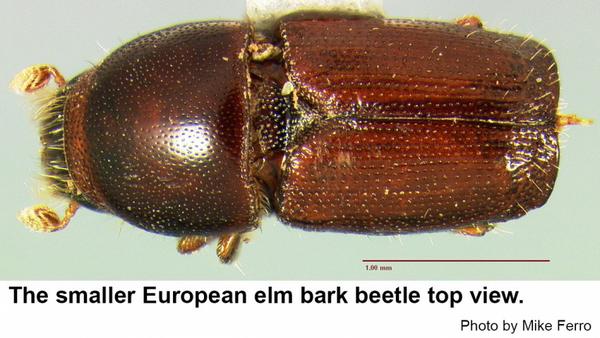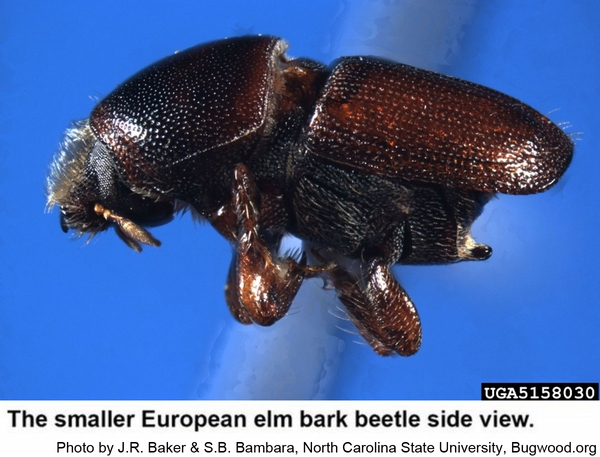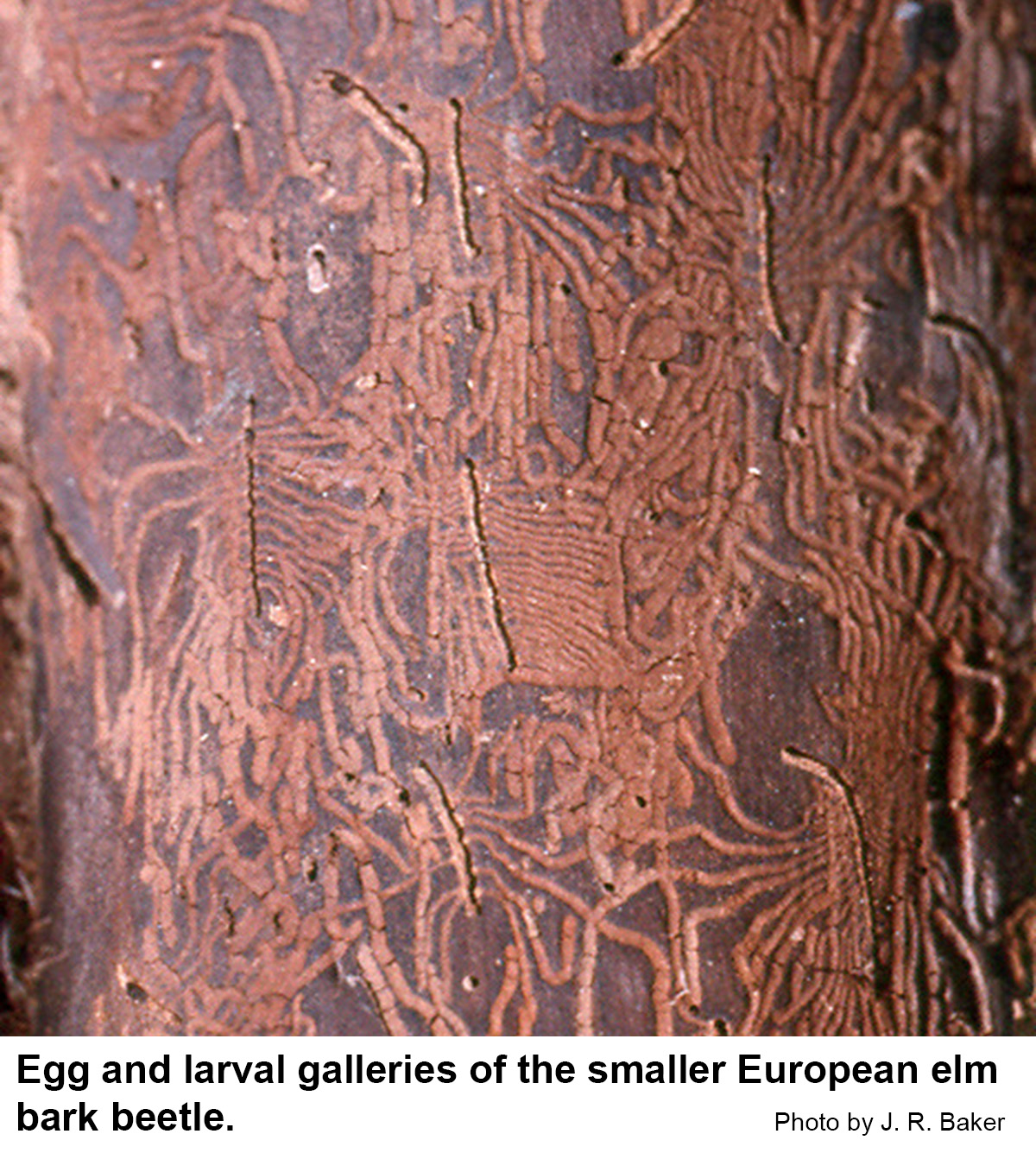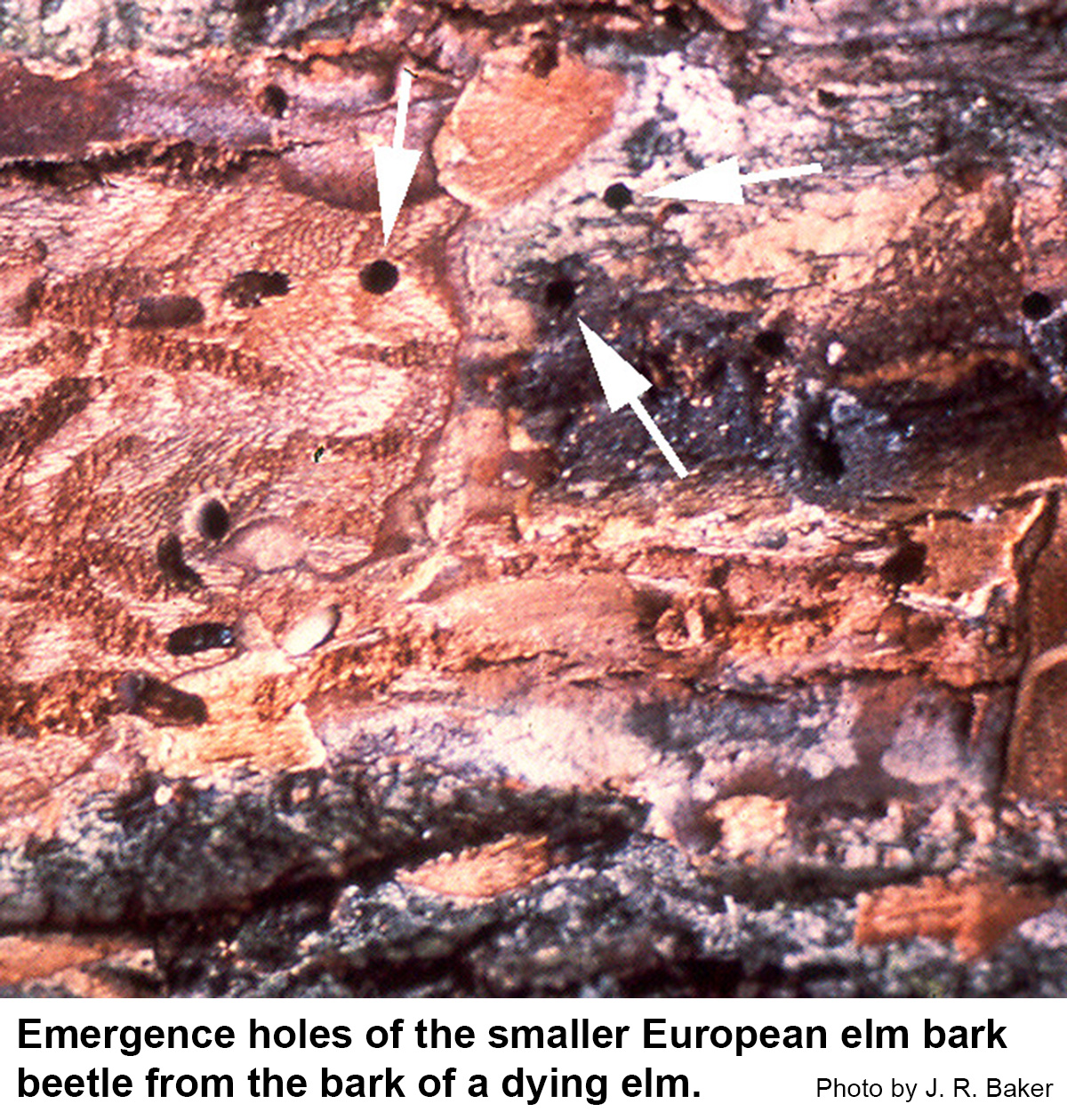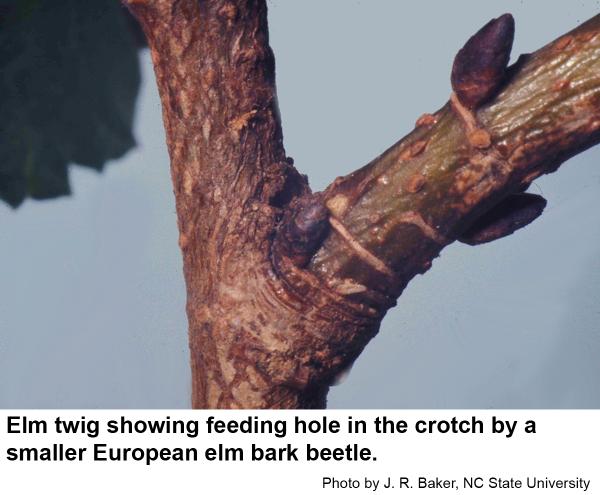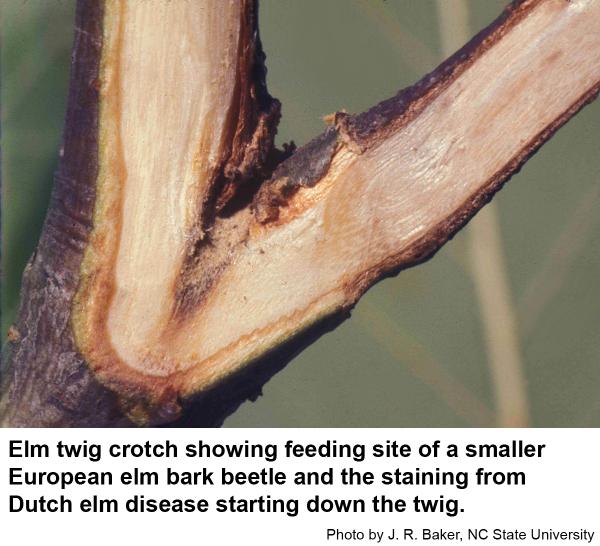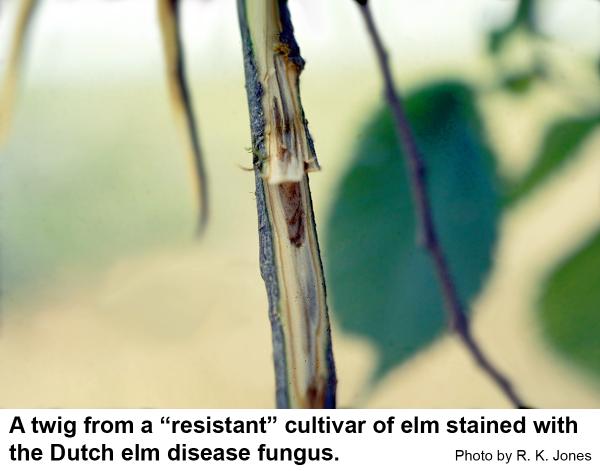Description and Biology
The smaller European elm bark beetle, Scolytus multistriatus, is dark reddish brown, shiny, and about 1/8 inch long. The underside of the rear is concave, with a noticeable projection or spine. Larvae are small, white grubs found under the bark of dying or dead elms. The egg galleries are straight and parallel with the grain of the wood and the larvae feed across the grain in the cambium just under the bark. Larvae develop through the summer months and also overwinter as grubs in “brood” trees. (Brood trees are dying or dead elms usually infected with Dutch elm disease.) Development from egg to adult beetle takes six or seven weeks in warm weather. New beetles fly to healthy elms to feed and then fly to dying or dead elms to breed. They can not breed in healthy trees although they can infect healthy elms with the Dutch elm disease pathogen as they feed. Smaller European elm bark beetles produce an aggregating pheromone, and host plant odors also play an important role in attracting the beetles to susceptible host trees. They have two to three generations per year here in North Carolina. Due to overlapping of generations, adults may be present almost continuously from April to October. The smaller European elm bark beetle is a serious pest of native and introduced elms because it is an important vector of the Dutch elm disease.
Host Plants
Smaller European elm bark beetles infest all of our native elm trees as well as Siberian elm and Japanese zelkova. Drought stress predisposes exotic elm species to infestation. Dutch elm disease is primarily a problem in American elm.
Residential Recommendations
It is possible to spray elms with a pyrethroid to prevent further bark beetle infestation. When used as directed, pyrethroids are very toxic to insects but are not particularly hazardous to humans and pets (other than fish-avoid using pyrethroids around pools, ponds, and streams). Because smaller European elm bark beetles infect elms by feeding in twig crotches, the whole canopy must be sprayed in spring before bud break and again after the new growth has emerged. Once a tree contracts Dutch elm disease but before the trunk and larger branches are infested, try to control the disease by pruning out dead and dying branches and paint the wounds with tree wound dressing. In urban settings, rapid removal of beetle infested, Dutch-elm-disease-infected American elms followed by destruction of the host material may slow the progress of Dutch elm disease. The wood from infected elms should be destroyed or debarked and the bark destroyed to prevent smaller European elm bark beetles from emerging successfully from such wood for months afterward.
References
- An Identification Tool For Bark Beetles of The Southeastern United States. Baker, J. R., J. LaBonte, T. H. Atkinson, S. Bambara. 2010. Lucid Key
- Elm Bark Beetles, Native and introduced bark beetles of elm. Anonymous. 2011. USDA, US Forest Service.
- Smaller European Elm Bark Beetle, Scolytus multistriatus. Anonymous. No Date. Information on Insects/Arthropods and Plant Diseases Oklahoma State University Entomology and Plant Pathology.
- Extension Plant Pathology Publications and Factsheets
- Horticultural Science Publications
- North Carolina Agricultural Chemicals Manual
For assistance with a specific problem, contact your local N.C. Cooperative Extension Center.
This Factsheet has not been peer reviewed.
Publication date: March 18, 2014
Reviewed/Revised: Oct. 3, 2023
Recommendations for the use of agricultural chemicals are included in this publication as a convenience to the reader. The use of brand names and any mention or listing of commercial products or services in this publication does not imply endorsement by NC State University or N.C. A&T State University nor discrimination against similar products or services not mentioned. Individuals who use agricultural chemicals are responsible for ensuring that the intended use complies with current regulations and conforms to the product label. Be sure to obtain current information about usage regulations and examine a current product label before applying any chemical. For assistance, contact your local N.C. Cooperative Extension county center.
N.C. Cooperative Extension prohibits discrimination and harassment regardless of age, color, disability, family and marital status, gender identity, national origin, political beliefs, race, religion, sex (including pregnancy), sexual orientation and veteran status.

